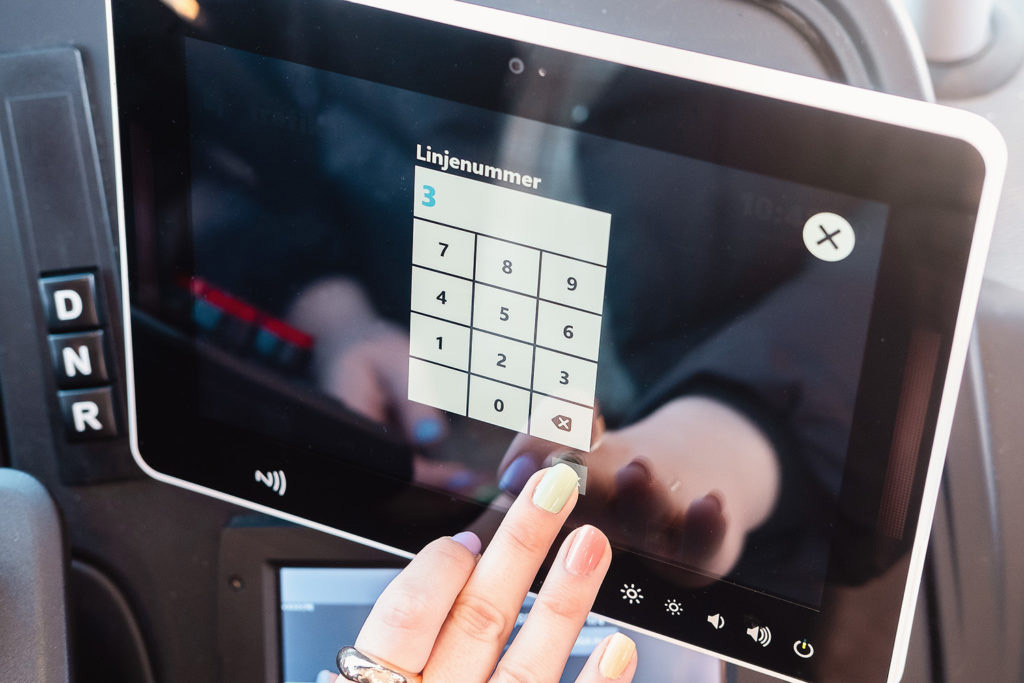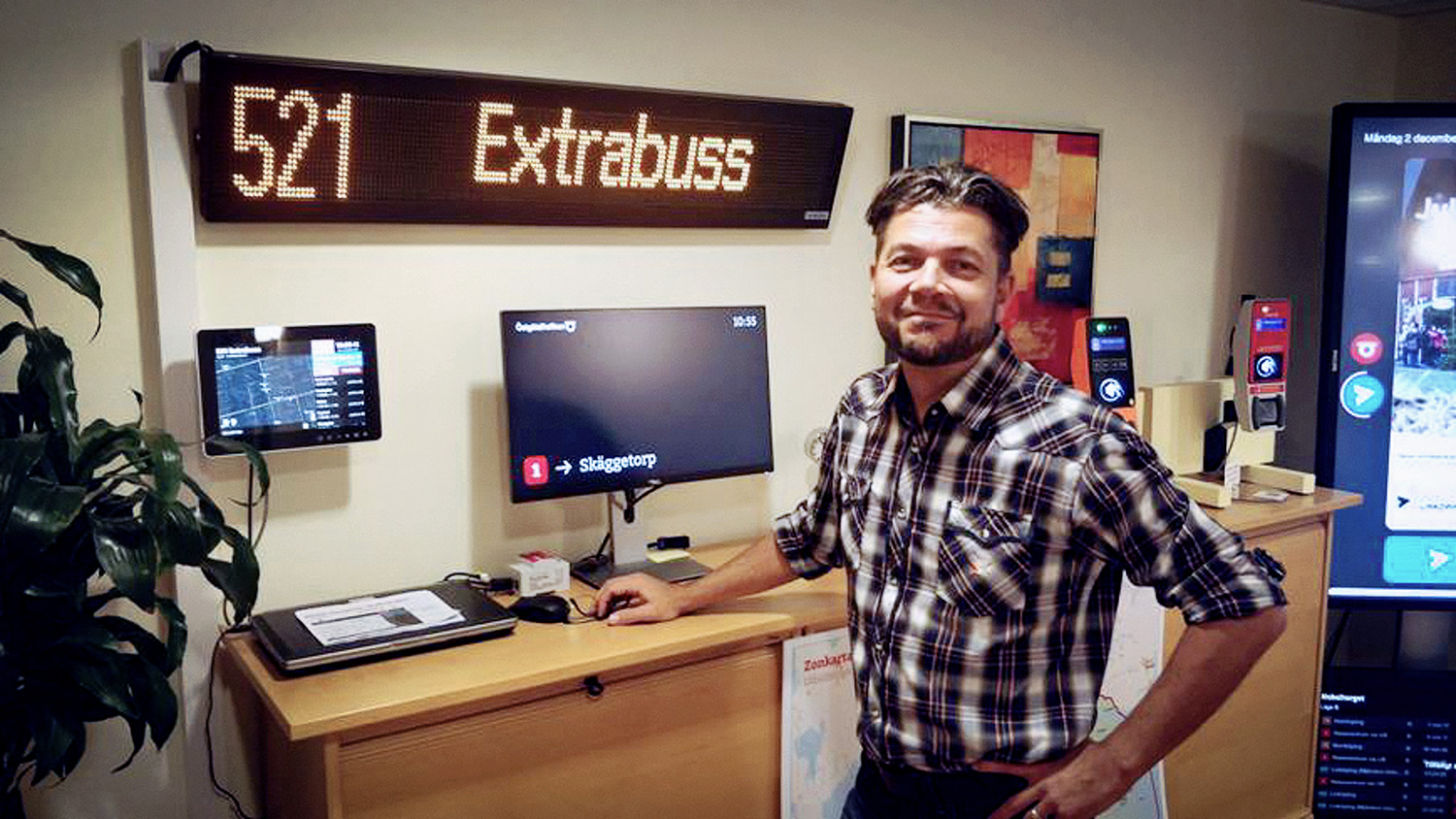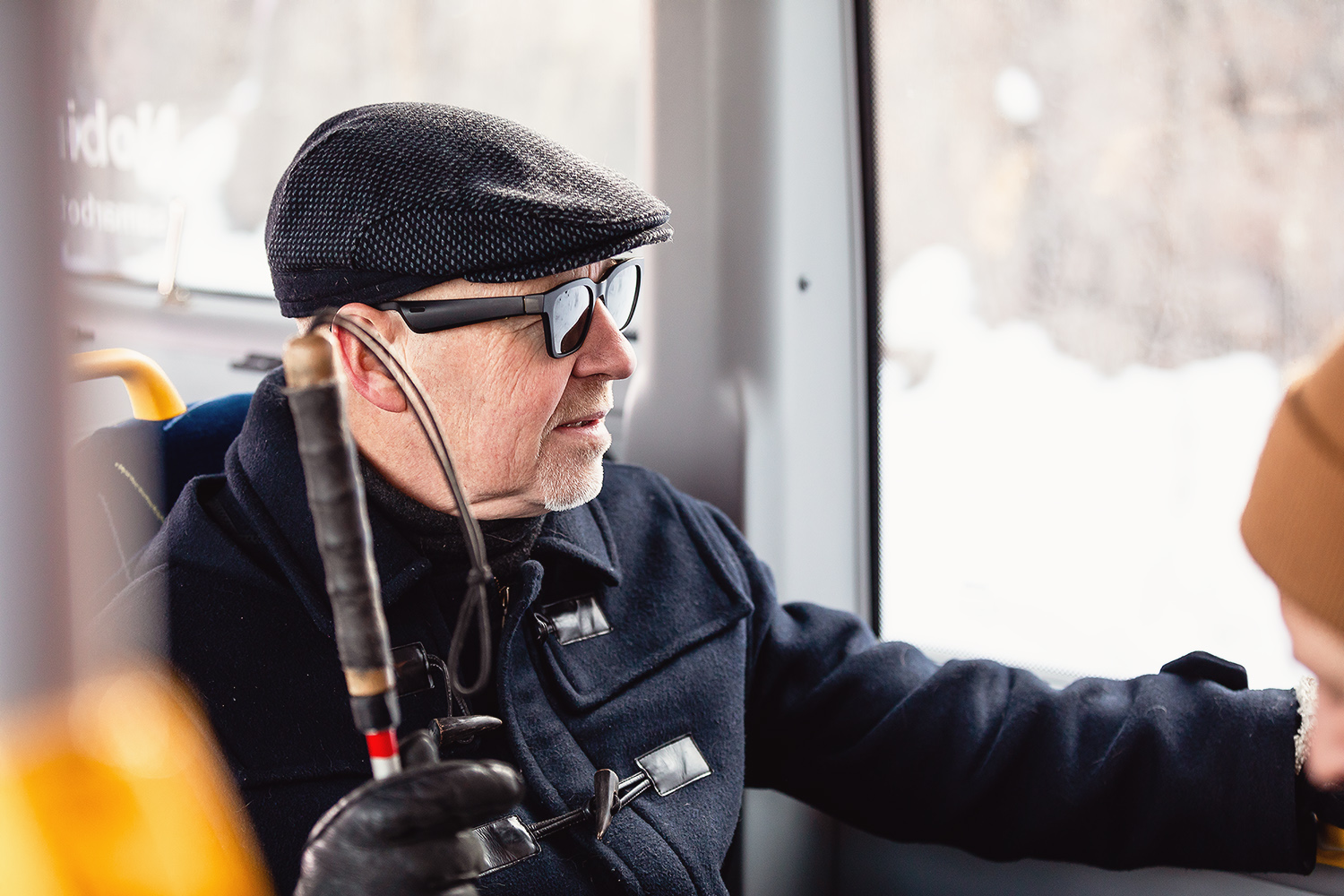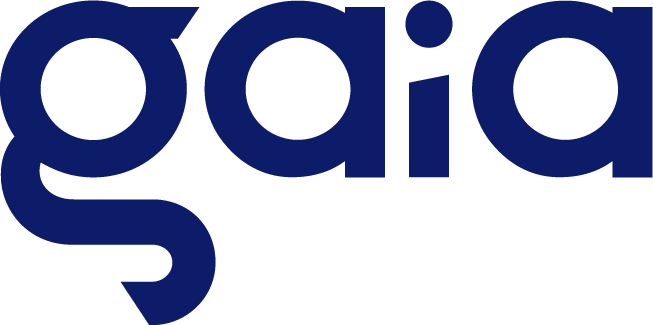Article
Pilot driver support puts drivers in control of public transport
Published 2021-10-08
If unforeseen incidents occur in public transport, the drivers are the first to be affected. In order to support them in their work, we have developed PILOT, an interactive system that assists with information, navigation and communication, improving their overview and control in traffic.
Public transport involves a steady stream of challenges caused by unforeseen incidents and changes during journeys. The drivers naturally play a key role in maintaining the flow of public transport, as they are not only the primary point of contact with passengers, but also a human link between the transport principal and operators. In order to provide drivers with the digital tools they need for their work, we have developed PILOT. This interactive driver support system assists with information, navigation and communication in public transport.
Information shared in real-time
PILOT supports the driver’s operations with features covering aspects such as vehicle status, manual signage during journeys and information about deviations. The driver support application is one of the components in our central system, Gaia Public Transport, which makes it possible to share information about vehicles and traffic status with other parties in real-time. In addition, PILOT is set to become a natural communication point where we can link up information from both systems and traffic management.

The PILOT driver support system onboard a bus.
Drivers can influence the central system
The manual functions in PILOT enable the driver to influence the central system and to circumvent the automatic features when necessary. For example, drivers can control signage functions, such as activating the “Full” sign when the bus has reached capacity. They can also help reduce confusion by displaying a blank sign or advertising the following route at the second-last bus stop. This provides passengers on board with information about the current journey, while the exterior signs inform people about the next route the vehicle will be following. If signs are adjusted manually in PILOT, all our apps pick up on the same real-time flow, and all connected units display the new information.

The driver manually changes the route number in PILOT.
Information in the event of deviation from the regular route
For every trip, we know the planned route on which the journey is based. This allows the system to recognize and identify cases where the vehicle deviates from the regular route. This information is used in the central system to inform users that a given vehicle deviates from the set route for one reason or another. In addition, the information is then logged and analyzed to help identify patterns regarding how often deviations occur.
“When a vehicle deviates from a planned route, the driver is made aware of this and PILOT shows that the vehicle is ‘taking a detour’. The system can then function differently because the vehicle has deviated from the pre-programmed route,” explains Björn Götestrand, Head of Innovation at Gaia.
Control of what is displayed if a vehicle goes offline
Another situation in which PILOT is highly useful is when the vehicle goes offline or loses its internet connection. The driver support system recognizes that it is no longer connected to the central system and an offline notification appears in the application. The driver is then able to control the signage manually and receives information that the signs may be deactivated in the vehicle because they may otherwise become irrelevant or show incorrect information.
We continue developing additional functions supporting the driver’s work in different situations. In this way, we are helping to ensure that the driver can focus on what is most important: the passengers and operating the vehicle.
You can find out more about Gaia Public Transport here.





